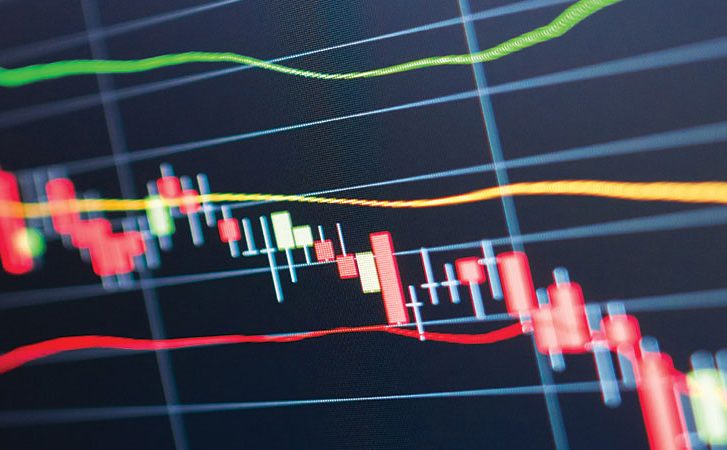How Active Non-Transparent ETFs Might Translate in Europe

How Active Non-Transparent ETFs Might Translate in Europe
July 2021
By Julie Rothwell
While Active Non-Transparent (ANT) ETFS are not a widely used term today amongst European asset managers, they are likely to form part of our future. To design future success in the non/semi-transparent space, it will be vital to consider the current European landscape.
Are you an explainable AI company that we should know about?
Learn More [link to accelerator program page]
Interested in learning more about emerging technologies for the financial services industry?
Sign-up for The Quarterly Update
European regulators have been conservative thus far in providing guidance on ANT ETFs. The Central Bank of Ireland has indicated that they are willing to consider such structures. However, with no regulatory changes currently proposed, it is likely to take time. In a relatively short period of time, the U.S. ANT market has grown to more than US$1.52 billion and bold predictions released by the NYSE suggest that active ETFs in total could reach US$300 billion in 2021 ($211 billion at present1). Could we see a shift in Europe toward the approval of such products? If so, how might the European market adopt this type of structure? Moreover, what do ETF issuers, regulators and exchanges need to consider, bearing in mind the European landscape differs from that of the U.S. or Canada?
There are a number of considerations to take into account: transparency, listing rules, intra-day NAV and operational requirements.
Transparency: In the existing U.S. structures, while there are six models in total approved (and a 7th in progress), there are generally two levels of transparency:
- A non-transparent model, adopted by ActiveShares, in which the portfolio is disclosed to the Authorised Participant (AP) Representative who trades on behalf of the AP and the VIIV (Verified Intraday Indicative Value) Agent who produces a per second intraday NAV utilised by market makers and investors.
- A semi-transparent model, as adopted by issuers such as Blue Tractor, T Rowe, Fidelity, NYSE AMS and Invesco, which uses proxy baskets with varying levels of transparency, disclosed to the broader market. The level of transparency is enough to allow market makers and APs to make markets, whilst still retaining the portfolio manager’s all-important investment collateral.
Based on the feedback issued thus far from European regulators, portfolio transparency has been a focal point. If these models were to be approved in the future, regulators might gain some level of comfort from a semi-transparent structure rather than a fully non-transparent model.
Listing rules: European exchange listing rules also need to be considered with regard to portfolio transparency, as there is currently no uniform approach across European exchanges. For example, Euronext Dublin (previously the Irish Stock Exchange) removed the requirement for daily portfolio disclosure in November 2014 and the London Stock Exchange has no such requirement, whereas the Swiss Exchange1, for example, as noted in their listing rules, stipulates daily portfolio disclosure to the exchange. Table 1 below outlines the transparency rules by exchange effective May 2021.

COUNTRY |
EXCHANGE |
PORTFOLIO DISCLOSURE REQUIREMENT (YES/NO) |
FREQUENCY |
COMMENTARY |
UK |
London Stock Exchange |
No |
N/A |
Source: LSE factsheet Active ETFs2 |
Germany |
Deutsche Borse (Xetra) |
It is understood that top 20 holdings by weighting are required to be publicised daily as well as full portfolio disclosure with no more than 1 month delay* |
Daily for top 20; no more than 1 month delay for full portfolio disclosure* |
N/A |
Switzerland |
SIX SIS |
Yes |
Daily |
SIX SIS listing rules specify daily disclosure of PCF to Exchange is a requirement for Active ETFs |
Italy |
Borsa Italiana |
No3 |
N/A |
Borsa Italiana was acquired by Euronext 9 October 2020, thus subject to change |
Ireland |
Euronext |
No |
N/A |
Removed daily disclosure requirement as ISE in November 2014 |
Amsterdam, Brussels, Lisbon, Oslo |
Yes |
Daily4 |
Daily PCF requirement noted in listing rules for Amsterdam, Oslo, Lisbon and Brussels |
*Not disclosed on the website, understood to be included in agreement between the Issuer and Exchange
Intra-day NAV (iNAV): The iNAV is standard in Europe. Typically, the exchanges require the iNAV to be produced approximately every 60 seconds. In reality, however it is produced on a more frequent basis. Will 15-second intervals, for instance meet requirements for a non-transparent ETF, or are exchanges and industry participants likely to pressure iNAV providers to conform to a more frequent pace, similar to the ‘per second’ VIIV (Verified Intraday Indicative Value) in place for Activeshares?
Operational requirements: Given the operational considerations involved (be it a proxy model or fully transparent), traditional active managers or ETF issuers wishing to launch active non-transparent structures should consider their existing operational infrastructure and ensure they have the mechanisms in place to support same. For example, the addition of the role of the APR who is effectively acting as a broker on behalf of the AP will typically require a technology build and is something BNY Mellon embarked on prior to supporting Activeshares.
Time to Consider Your Strategy
European asset managers considering the ETF wrapper for their next product or indeed existing ETF issuers seeking to enter the ANT ETF space will be monitoring progress closely with European regulators on their view of semi/non-transparent active ETFs and in particular the Central Bank of Ireland given over 60% of European ETFs are Irish-Domiciled. With the European ETF market growing at a rate of 11.2%5 so far in 2021, it is difficult to ignore the opportunity ETFs present, thus in my view if asset managers are considering entering the ETF market with an active semi/non-transparent product(s), now is a great time to develop your strategy.
1 NYSE Active ETF Update Issue #21
3 https://www.borsaitaliana.it/etf/emittenti/obblighiinformativi/obblighiinformativi.en.htm
5 ETFGI April 2021 Europe
BNY Mellon is the corporate brand of The Bank of New York Mellon Corporation and may be used to reference the corporation as a whole and/or its various subsidiaries generally. This material does not constitute a recommendation by BNY Mellon of any kind. The information herein is not intended to provide tax, legal, investment, accounting, financial or other professional advice on any matter, and should not be used or relied upon as such. The views expressed within this material are those of the contributors and not necessarily those of BNY Mellon. BNY Mellon has not independently verified the information contained in this material and makes no representation as to the accuracy, completeness, timeliness, merchantability or fitness for a specific purpose of the information provided in this material. BNY Mellon assumes no direct or consequential liability for any errors in or reliance upon this material.
©2021 The Bank of New York Mellon Corporation. All rights reserved.




